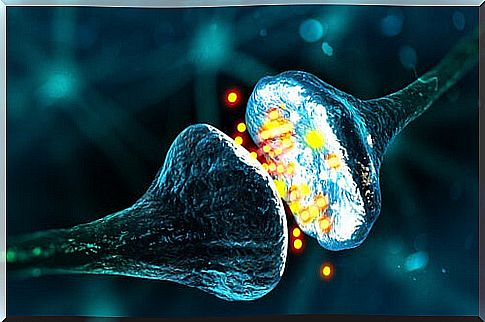Substance P, The Pain Peptide

Different chemicals circulate through our body. One of them is called substance P. In this sense, we can say that it works as a neurotransmitter that has been identified in various processes related to pain.
Through this article we will take a tour of the peculiar properties of this substance. We will know what it is about, what action it exerts and why it is related to pain. In addition, we will navigate through various curious facts.
Substance P, what is it?
There are different types of neurotransmitters. They may be:
- Amino acids.
- Amines
- Peptides
Substance P is part of the peptides. On the other hand, glutamate and glycine are amino acids and acetylcholine, dopamine and serotonin are part of the group of amines. In addition, substance P acts as a neuromodulator. We are talking about a peptide discovered by Ulf Von Euler and John H Gadoum, who located it in the brain and in the intestine. They even discovered it by accident, as they were initially looking for acetylcholine.
It is found in our central and peripheral nervous system, especially in: the hypothalamus, the substantia nigra and the dorsal horn of the spinal cord. Also in the salivary glands and the biliary and gastrointestinal tracts.

Your relationship with pain
Substance P is synthesized by nociceptors themselves, that is, receptors that specialize in capturing potentially harmful stimuli that can induce pain sensations. When a branch of some axon terminal is activated, the secretion of substance P can be activated.
This happens because of the other branches of the axon in the surrounding skin. In addition, substance P causes vasodilation and is associated with the release of histamine. For this reason, it is a cause of secondary hyperalgesia, which means that it causes a decrease in the pain threshold and an increase in the response to painful stimuli after a local injury.
Now, according to Bear, Connors and Paradiso in their book Neuroscience, Exploring the Brain , although it is believed that the neurotransmitter of pain afferents is glutamate, these neurons also contain substance P. So, the pain peptide is found in interior of the storage granules at the axonal terminals. In addition, it can be released through high-frequency burst action potentials.
More about substance P
We have already seen that substance P acts on the mechanisms associated with pain, but we have not discussed one of the most important discoveries associated with it: its role in migraine. In recent years, the role of substance P in migraine has been investigated and clues have been identified to deal with this condition.
For example, Millán Guerrero, Pineda Lucatero, and Pacheco Carrasco published an article entitled Migraine. A review of the physiopathogenesis and future therapeutic alternative in which they suggested that to reach a potential cure for migraine, drugs that interact directly with this neuromodulator should be sought.

Now, substance P, participates in other matters. For example, it works by promoting the proliferation of tumor cells. In fact, researchers from the Castilla y León Institute of Neurosciences found that, by using antagonist substances that bind to substance P receptors in tumor cells, their death is induced. Although it should be noted that, for now, the method has only been tested in rodents.
In addition, substance P fulfills other functions. Let’s see:
- Stimulate the contraction of vascular and extravascular smooth muscles.
- They participate as a reinforcement in salivation.
- It orchestrates the responses of the nervous system when stressful situations arise in which not only persistent pain is present, but also aggression.
- Lowers blood pressure.
- Stimulates the duodenum.
- Exercises on the cardiovascular system with hypotensive activity.
Substance P is a unique neurotransmitter, as it coexists with other substances and although it was discovered more than 80 years ago, new functions are still being found and research is being done to find solutions to various problems.
In fact, it is so important that it is giving us answers to find a cure for migraine headaches and cancer. We hope that research will continue to provide us with more information about this and other substances and that it will help us find ways to enhance our well-being.









